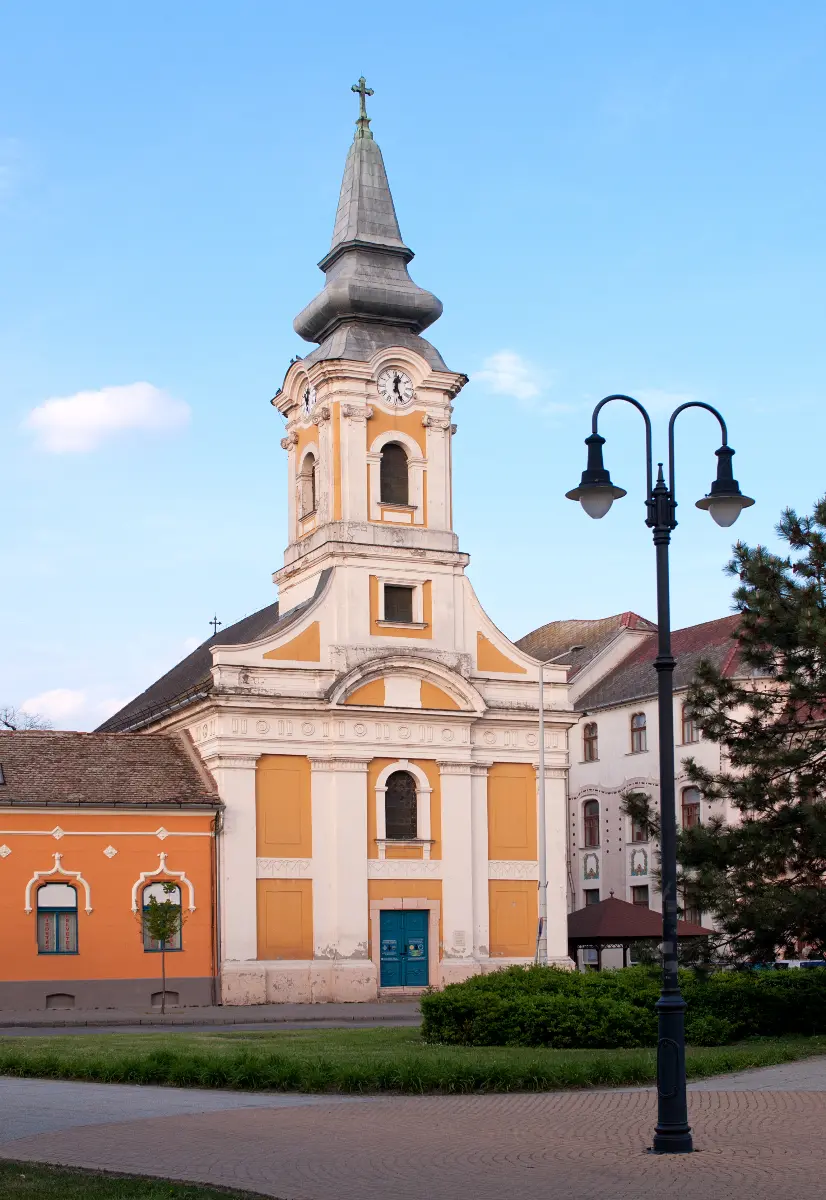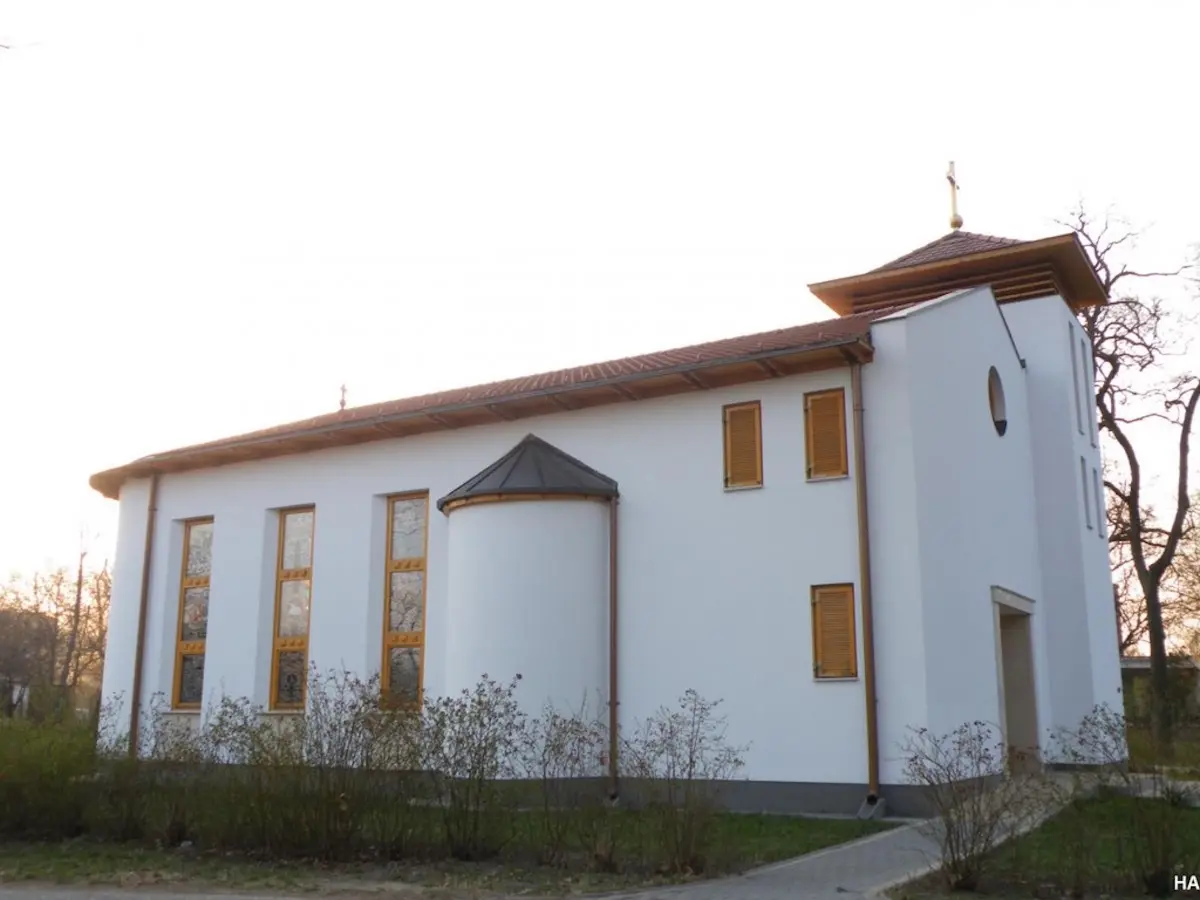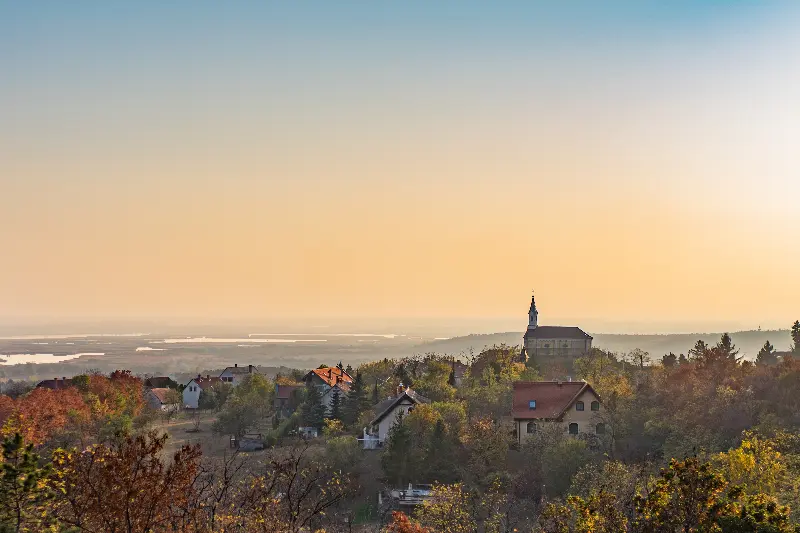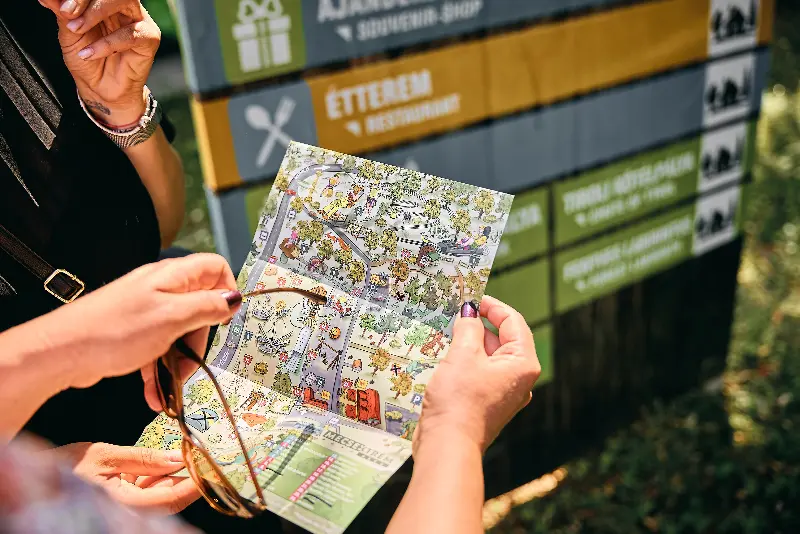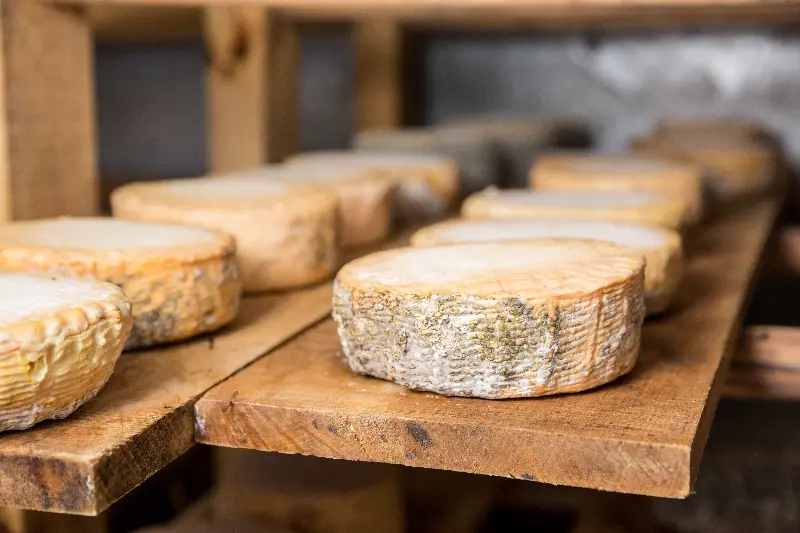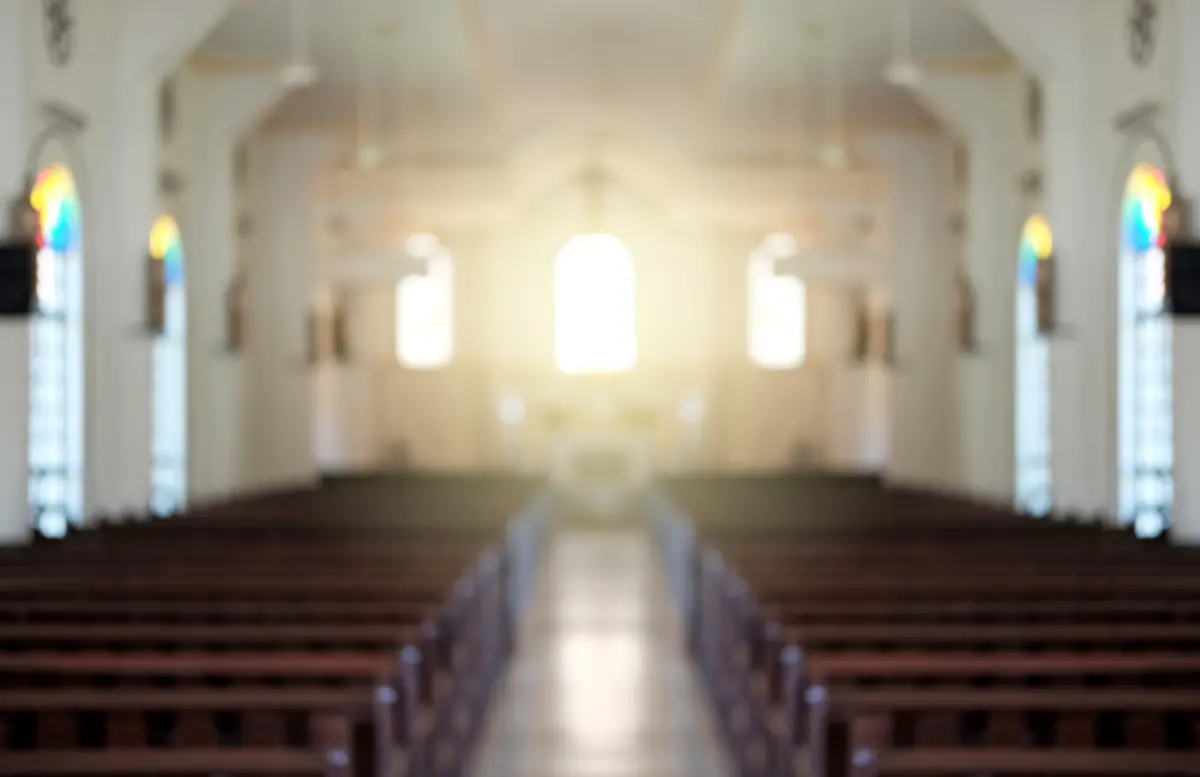
Helyszín címkék:
Six churches of Kecskemét
Bóday Csilla
Saint Nicholas’s Church
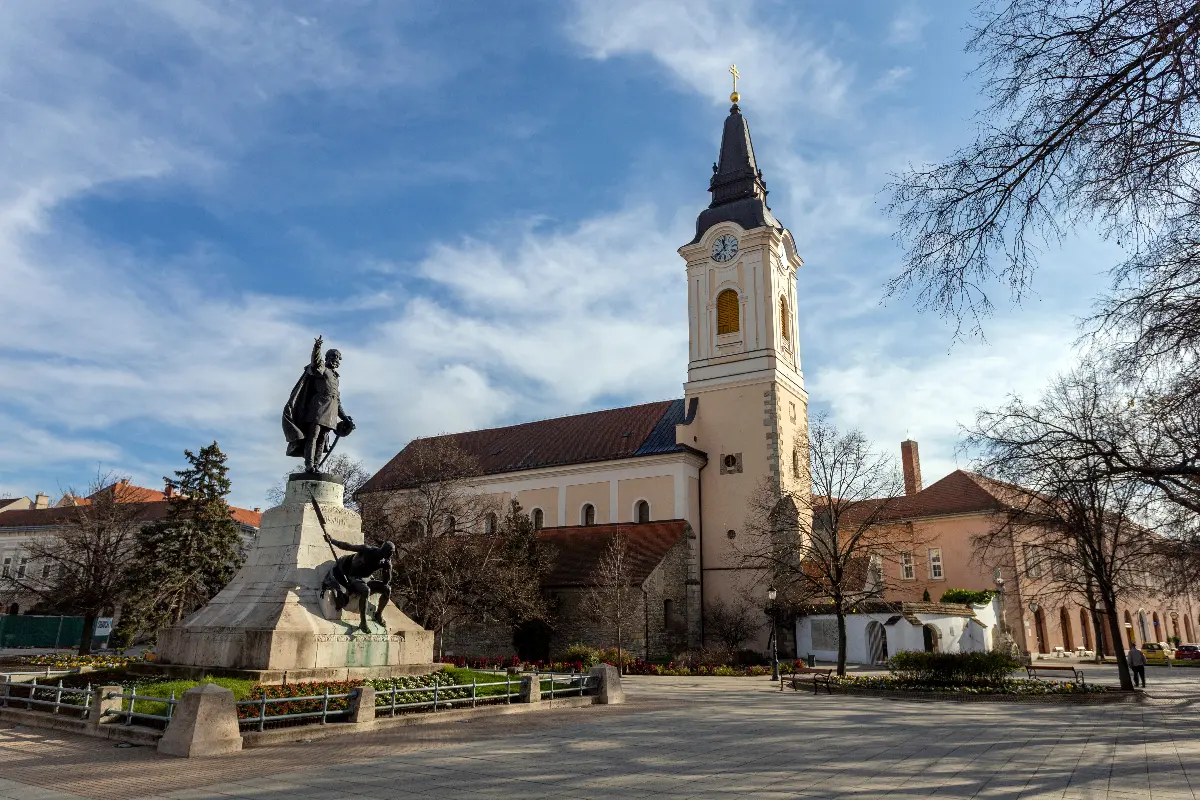
This is not only the oldest church in Kecskemét, it is the oldest building as well. Citizens who have lived in Kecskemét for a long time also call it the Friends’ church. The Gothic building stands opposite the Town Hall. It was built around the end of the 13th century, the design followed the medieval custom of illuminating the main altar at sunset on the feast of Saint Nicholas, the patron saint of the city. During the Reformation, the Christian community divided the church, and Catholics and the Reformed groups alike could hold masses and worship here. From the second half of the 17th century, the church became the Franciscan monks’ property, its name the Friends’ Church derives from here. It has expanded over the centuries, the Saint Anne chapel was added to the building. The church was destroyed by fire too. At the end of the 18th century, it received a baroque style, then at the beginning of the 20th century the Lourdes chapel was added.
The Kecskemét Cathedral
In 1752, the town received permission from Maria Theresa to construct the Great Church in Kecskemét.
Based on Gáspár Osvald’s designs, the church was built by Boldizsár Fischer from 1774 over a quarter of a century with the help of architects from Vác. In 1819, the tower and the roof of the cathedral burned down, which were restored only decades later. The building was constantly renovated and expanded, and then underwent its most extensive renovation after the 1911 earthquake. The church was built in the late Baroque style, with a tower and a gable roof standing in one of the corners of Kossuth Square in the city centre. The facade is divided by three large gates, which have been given copfs or eyebrow-like geometric decorations. The statues of St. Stephen and St. Ladislaus can be seen in alcoves. Next to the entrances, there are plaques commemorating the fallen of the War of Independence in 1848 and the victims of the two World Wars. There is the statue of St. Peter and St. Paul in the tympanum. The interior is a free-standing, single-nave church with a straight sanctuary covered with a Lunette vault. A shrine and a chapel row can be seen on the side walls, and a choir gallery above the entrance. The glass windows were installed a century ago, but the fittings date back to the 18th century.
Hungarian Orthodox Church
In the 18th century, Greek merchants played a significant role in the life of the city of Kecskemét. They founded a school, began building the church, and established a church library. In 1800, architect Ágoston Fischer was asked to draw up plans for the church, but construction could not begin until a quarter of a century later, under Augustine's son. The Orthodox Church was consecrated on 3rd September 1829. The building has a single nave layout with huge arched windows on two sides. There are twenty classicist-style iconostases on the walls, consisting of twenty wooden icons, the work of Pál Pádics, an icon painter master from Miskolc. According to Greek Orthodox custom, only stacidias were placed for the elderly and sick believers to lean on, there were no seats. The Greek Church Art Museum is in the neighbourhood.
The Evangelical Church
The evangelical parish in Kecskemét is soon to be five hundred years old, but after 1525 - after the Synod of Debrecen - most of the Protestants also converted to the Calvinist faith. Towards the end of the 18th century, the life of the evangelical church intensified; even Sándor Petőfi attended the primary school of the church. The romantic church was built in 1857 according to the designs of Miklós Ybl. It was consecrated in 1863. The floor plan is in the shape of a Greek cross, with a romantic altar, a copf and a neo-baroque organ inside. The church seats four hundred believers and has one bell.
Saint Frances of Assisi Church
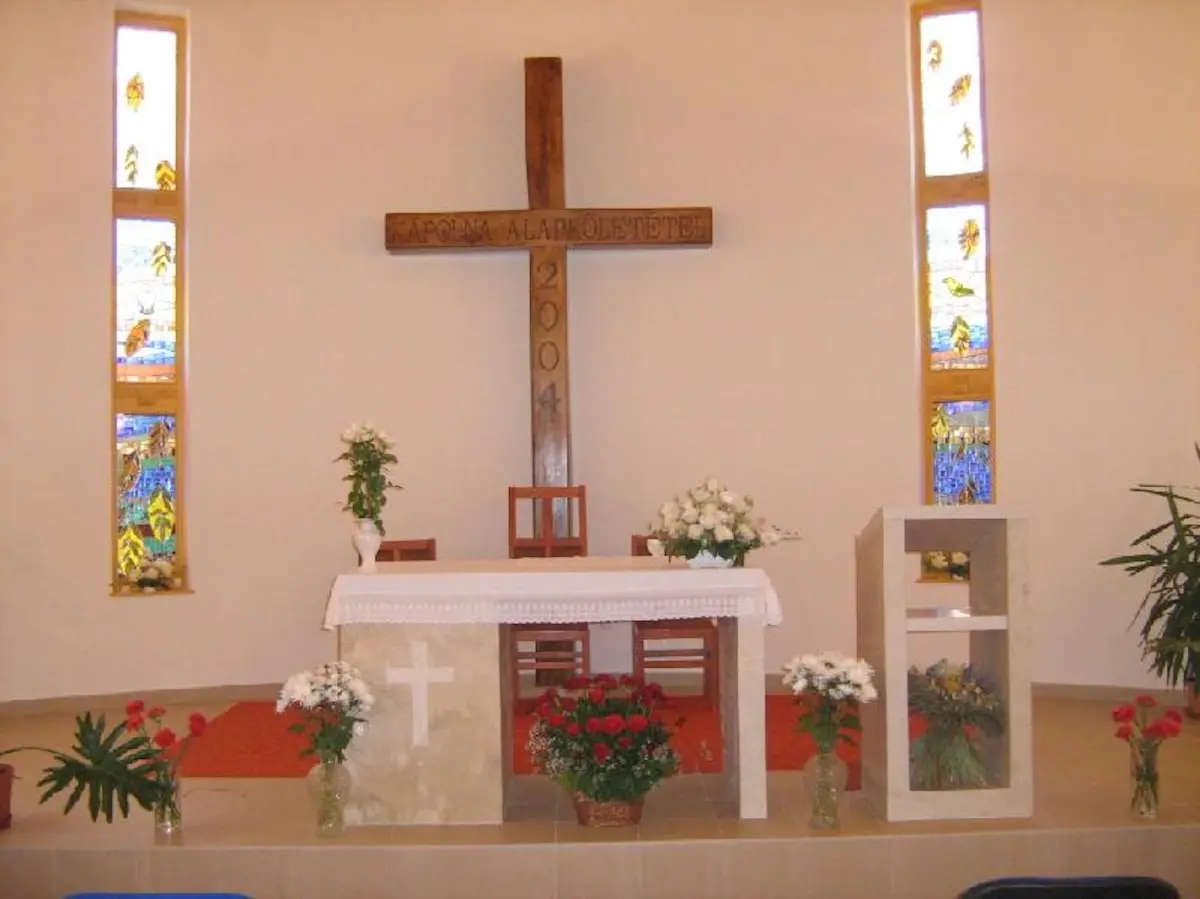
Saint Frances of Assisi Church is a church that was completed in less than a decade. It was built next to the Kecskemét Game Park between 2005 and 2007 according to Lajos Borbély’s designs, the Károly Koós award-winning architect. The church with its Mediterranean atmosphere, was named after the founder of the Franciscan order and consecrated in September 2007.
Holy Trinity Parish
The foundation stone of the baroque-style Holy Trinity Parish Church in Kecskemét was laid in 1729, but it was built over a period of three decades by the Piarist order under the leadership of Sándor Demka. The pulpit is from Privigy, while the main altar is from the Highlands. The side altars are named after Saint John of Nepomuk, the altar of Saint Joseph and Mary of Kalazanci. This is the only baroque church in Kecskemét. The Piarists and the Kohárys’ coat of arms featuring a lion was placed on the balcony gate. Sculptures of the main facade: Saint Elizabeth, Saint Joseph of Kalazanci, Saint John the Baptist, Saint Ladislaus, Saint Stephen and the Virgin Mary, all designed by Antal Conti Lipót The low tower is equipped with two bells. Entering the interior of the church there is a single nave with four vaulted sections overdecorated with baroque exaggerations. Above the entrance there is a spacious, arched front choir. The sub church with a crypt is a rarity. It was originally a chapel for German citizens in Kecskemét.
